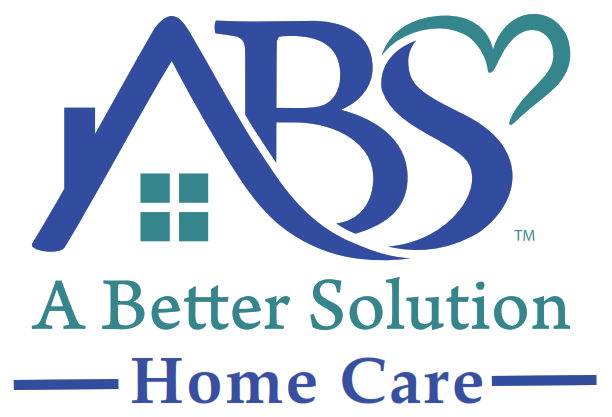
Top Healthcare Staffing Challenges 2025 and How to Overcome Them
06-23-2025
The Growing Demand for Healthcare Workers
The healthcare staffing challenges are not emerging in isolation. They are a result of long-building shifts in patient demographics and care delivery models. In 2025, the U.S. continues to see significant population aging, with adults aged 65+ projected to exceed 77 million. This aging population brings a surge in chronic illnesses like diabetes, heart disease, and dementia, which require long-term, continuous care.
The post-pandemic staffing crisis has also reshaped the way healthcare is delivered. Demand has escalated not only in hospitals but also in staffing for long-term care facilities, senior living communities, and private homes. The shift toward aging in place and alternative care models has pushed the boundaries of traditional staffing and intensified the challenges facilities must now navigate.
According to the U.S. Bureau of Labor Statistics, healthcare will add more jobs than any other industry through 2032. This unprecedented growth is being met with a significant talent gap, exacerbated by the future of healthcare employment shifting toward tech-integrated and home-based care. The demand for travel nurses, certified nursing assistants (CNAs), and physician recruitment has reached an all-time high, further compounding the healthcare staffing challenges 2025.
Top Healthcare Staffing Challenges in 2025
The staffing shortages 2025 present a critical threat to care delivery. From administrative overload to severe talent gaps, the healthcare industry faces numerous interconnected challenges:
Staff Shortages & High Turnover: Facilities across the country are facing staffing shortages in healthcare, affecting their ability to maintain baseline levels. Many organizations are losing staff to early retirement, career changes, or better-paying roles in competing systems. This trend has been worsened by pandemic-era burnout, financial pressures, and lack of upward mobility. As a result, many departments, particularly in rural or underserved areas, are operating with skeleton crews. The ripple effects include patient care delays, staff resentment, increased medical errors, and higher turnover. Addressing this is essential to alleviating healthcare staffing challenges 2025 and requires immediate implementation of flexible scheduling in medical teams, better compensation packages, and robust wellness initiatives.
Recruiting Qualified Professionals: The difficulty in recruiting skilled talent is driven by regional disparities, educational pipeline bottlenecks, and intense competition from other facilities. Hospitals that can’t compete on salary or location lose top-tier candidates to larger systems or urban centers. The situation is more severe due to the ongoing nurse staffing shortage, especially in roles like ICU nurses, lab analysts, and surgical techs. Some hospitals are increasingly dependent on travel nurses and locum tenens, which while effective, can strain budgets and affect continuity. Expanding healthcare recruitment strategies with incentives for relocation, international recruitment, and stronger university partnerships is crucial to overcoming healthcare staffing challenges 2025.
Burnout & Low Morale: Burnout among healthcare workers is no longer limited to critical care settings. It now affects every department. Continuous overtime, emotional exhaustion from dealing with high-acuity patients, and lack of recognition erode team morale. Staff experiencing burnout are more likely to call in sick, disengage during shifts, or leave the profession altogether. Leadership must strengthen recruitment and retention strategies in healthcare by improving staffing ratios, offering mental health support, recognizing staff efforts, and acknowledging contributions regularly to address these healthcare staffing challenges 2025 facilities are now facing across the board.
Inconsistent Staffing Levels: Staffing variability is one of the most disruptive issues for patient care. One week, departments are overstaffed and sending people home; the next, they are underprepared for patient surges. In many facilities, this is due to outdated scheduling systems, lack of cross-training, and over-reliance on a small full-time workforce. Inconsistent patient care staffing ratios create bottlenecks in the emergency room, discharge delays, and diminished care quality. Solutions include predictive analytics for scheduling, forming internal float pools, and working closely with a healthcare staffing agency for reliable gap coverage, a key tactic in reducing healthcare staffing challenges 2025.
Compliance & Credentialing Issues: Compliance has become increasingly challenging with a growing emphasis on up-to-date credentials, background checks, and training standards. Many organizations lack the administrative staff or tools to track it all effectively. Mismanagement can result in unqualified personnel working shifts, putting licensure and patient safety at risk. Leveraging digital tools or outsourcing to partners experienced in staffing compliance in healthcare helps streamline this process and ease related healthcare staffing challenges 2025.
Lack of Specialized Talent: As patient needs become more complex, the need for specialization has grown. Areas like oncology and neonatal intensive care demand professionals with niche certifications and experience. Yet, the talent pipeline has not evolved to keep pace with these new demands. This results in delays in diagnostics, substandard care, or facilities simply not offering needed services. Investing in staff education through internal programs and strategic partnerships is a long-term but essential solution for mitigating healthcare staffing challenges 2025.
Technology Integration Gaps: With many providers shifting to hybrid or remote care delivery models, technological adaptability has become a core requirement for new hires. Unfortunately, a skills mismatch exists between what the roles demand and what the labor market offers. The lag in telehealth integration in staffing and poor digital literacy among staff impact everything from patient intake to EHR management. Closing this gap requires a commitment to tech-focused onboarding and ongoing training to address the future-facing healthcare staffing challenges 2025 presents.
How a Healthcare Staffing Agency Helps Overcome These Challenges
Rapid Access to Qualified Talent: A reputable healthcare staffing agency provides immediate access to a pool of licensed, experienced professionals. These include nurses, technicians, CNAs, and even administrative support staff, all ready to meet short-term and long-term needs.
Reduces Hiring Time and Cost: By outsourcing recruitment, facilities save time and resources typically spent on advertising, interviewing, and onboarding. This is especially helpful during the hospital staffing crisis when speed is essential to managing healthcare staffing challenges 2025.
Credentialing and Compliance Management: Staffing agencies ensure every candidate is up-to-date with certifications, background checks, and licensing, removing the burden of navigating staffing compliance in healthcare from the internal HR team.
Flexible Staffing Models: Whether it’s last-minute sick leave or planned vacations, agencies offer flexible solutions. This includes per diem staff, on-call personnel, and part-time professionals to ensure optimal rotational shifts in healthcare settings.
Access to Niche Specialists: Agencies can provide highly specialized professionals for departments like ICU, pediatrics, and mental health, reducing gaps and supporting hospitals through some of the most pressing healthcare staffing challenges 2025 has created.
Boosts Staff Morale and Patient Care: Filling gaps quickly helps prevent burnout, maintains high morale, and ensures patients receive timely, consistent care. In many cases, having backup support is the only way to sustain quality outcomes during peak patient loads and relieve pressure tied to healthcare staffing challenges 2025.
Choosing the Right Staffing Partner
Look for Accreditation and Track Record: Not all staffing providers are created equal. Choose agencies with national accreditation and a history of successfully placing talent across diverse care settings.
Evaluate Technological Capabilities: Effective partners should offer scheduling tools, credential tracking, and integration with your existing systems. This is especially critical as telehealth staffing becomes the norm.
Ensure Cultural and Strategic Alignment: The right partner should understand your organization's mission, values, and patient care standards. Misalignment can lead to poor outcomes and staff dissatisfaction.
Ask the Right Questions:
- How do they handle urgent staffing needs?
- What is their process for vetting professionals?
- How do they support continuity of care and retention?
Plan for the Long Term: Consider a partner who can grow with your organization, offering both immediate relief and strategic support for the future of healthcare employment. The ideal partner provides a strategic healthcare staffing solution that aligns with your facility's trends and regulatory needs.
Turn Staffing Challenges Into Strategic Strengths
The healthcare staffing challenges 2025 are complex but solvable. With smart planning, investment in people and technology, and the right partners, healthcare organizations can not only survive but thrive. From addressing the post-pandemic staffing crisis to adapting to future employment trends, the key lies in being proactive and prepared for the evolving demands.
👉 Need help solving your staffing challenges?
Partner with A Better Solution Home Care, your trusted home healthcare staffing agency, for flexible, reliable healthcare staffing solutions.
📞 Contact us today: 866-945-7973
🔗 Learn more: https://abs.care/Health-Care-Staffing
